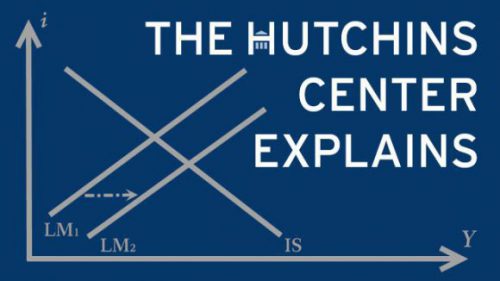The chart in this post was updated on May 14 to correct an error.
What is a budget baseline?
A budget baseline is a projection of federal spending, revenues, deficits or surpluses, and debt, based on assumptions about the economy and trends in spending and revenues. Congress relies on baselines, often looking out ten years, produced by the Congressional Budget Office (CBO) and the Joint Committee on Taxation (JCT). This post explains the importance of baselines to the congressional budget process.
How do current law and current policy baselines differ?
A current law baseline assumes that enacted laws will continue, temporary provisions will expire as scheduled, and discretionary spending will grow with inflation from current levels (subject to any statutory spending caps). By law, CBO is required to use the current law baseline for its projections.
A current policy baseline assumes that current laws continue and expiring provisions will be extended.
This matters as Congress debates whether to extend those provisions of the Tax Cuts and Jobs Act which are set to expire at the end of 2025 and whether to enact additional tax cuts. Using the current law baseline, extending the TCJA will appear in the budget bill as a reduction in federal revenues and an increase in the deficit by $4 trillion from 2025 to 2034. Using the current policy baseline, extending the TCJA would look cost-free, although any additional tax cuts would be scored as a cost.
The chart below shows the difference between the current law and current policy baselines on projections of the deficit as a percent of GDP.
What role do baselines play in the reconciliation process?
To avoid a filibuster in the Senate, which takes 60 votes to break, the bill will be considered under the reconciliation process. A reconciliation bill needs only a majority of the Senate to pass. Republicans have 53 seats in the Senate plus the vice president’s vote in a tie, so they can pass a reconciliation bill without any Democratic votes, even if a couple of Republicans vote against it.
To use the reconciliation process, the House and Senate must produce a budget resolution that sets budgetary targets for congressional committees. Each of the committees is directed to write legislation on spending, revenue, and deficit-reduction targets assigned to it in the resolution. The budgetary effects of language the committees produce are usually measured against the current law baseline. The resolution is not a law; the president doesn’t sign it.
Senate consideration of a reconciliation bill is constrained by a parliamentary rule written into law known as the Byrd Rule, named for its progenitor, the late Sen. Robert Byrd (D-WV). The Byrd Rule, among other things, requires that the tax and spending provisions in each committee’s section of a reconciliation bill produce the change in the deficit specified in the budget resolution. It takes 60 votes in the Senate to waive this rule if any senator forces the issue.
The Byrd Rule also prohibits the Senate from passing a reconciliation bill that would widen the deficit beyond the 10-year budget window. Here, the choice of baseline is key. Under a current law baseline—the one that has traditionally been used—the Senate has to either pay for extending the expiring provisions of the TCJA with offsetting tax increases or spending cuts beyond ten years, or it has to make the extension shorter than ten years. Under a current policy baseline, the extension of the tax cuts is unconstrained by this provision of the Byrd Rule.
None of this applies to the House, which has its own rules, and can more easily set them aside with a simple majority vote.
Who decides which baseline is to be used in the Senate?
By law, the chair of the Senate Budget Committee can determine the budget estimates used in Senate deliberations. The Senate Parliamentarian advises the Senate on interpreting Senate rules and precedents. In the past, the Parliamentarian has expressed skepticism about using a current policy baseline for reconciliation, according to those who have worked with her. Procedurally, the parliamentarian gives advice to the presiding officer in the Senate (either the vice president or a senator who is filling that role on a given day) which he or she generally uses as the basis for ruling on questions of procedure that arise from the floor. Overturning the ruling of the presiding officer takes 60 votes to succeed.
What baseline is the Senate considering for the fiscal year 2025 budget resolution?
The fiscal year 2025 budget resolution deviates from the norm in its planned usage of a current policy baseline in the reconciliation process. Senate Budget Committee Chair Lindsey Graham (R-SC) said in early April that the current policy baseline will be used in consideration of the extension of the TCJA. This would allow Congress to make the TCJA extension permanent without offsetting spending cuts or revenue increases.
This approach has drawn sharp criticism from other senators. Senator Elizabeth Warren (D-MA) compared the TCJA extensions to extending a rental lease for free: “Billionaire math: You sign your yearlong lease and pay your rent each month for your apartment. When your landlord comes back at the end of the lease and says, ‘How about signing for another year?’ You say, ‘Happy to sign. It won’t cost anything since this is an extension, right?’ Well, of course not.”
The Brookings Institution is committed to quality, independence, and impact.
We are supported by a diverse array of funders. In line with our values and policies, each Brookings publication represents the sole views of its author(s).









Commentary
What are budget baselines, and what do they have to do with reconciliation in Congress?
May 8, 2025